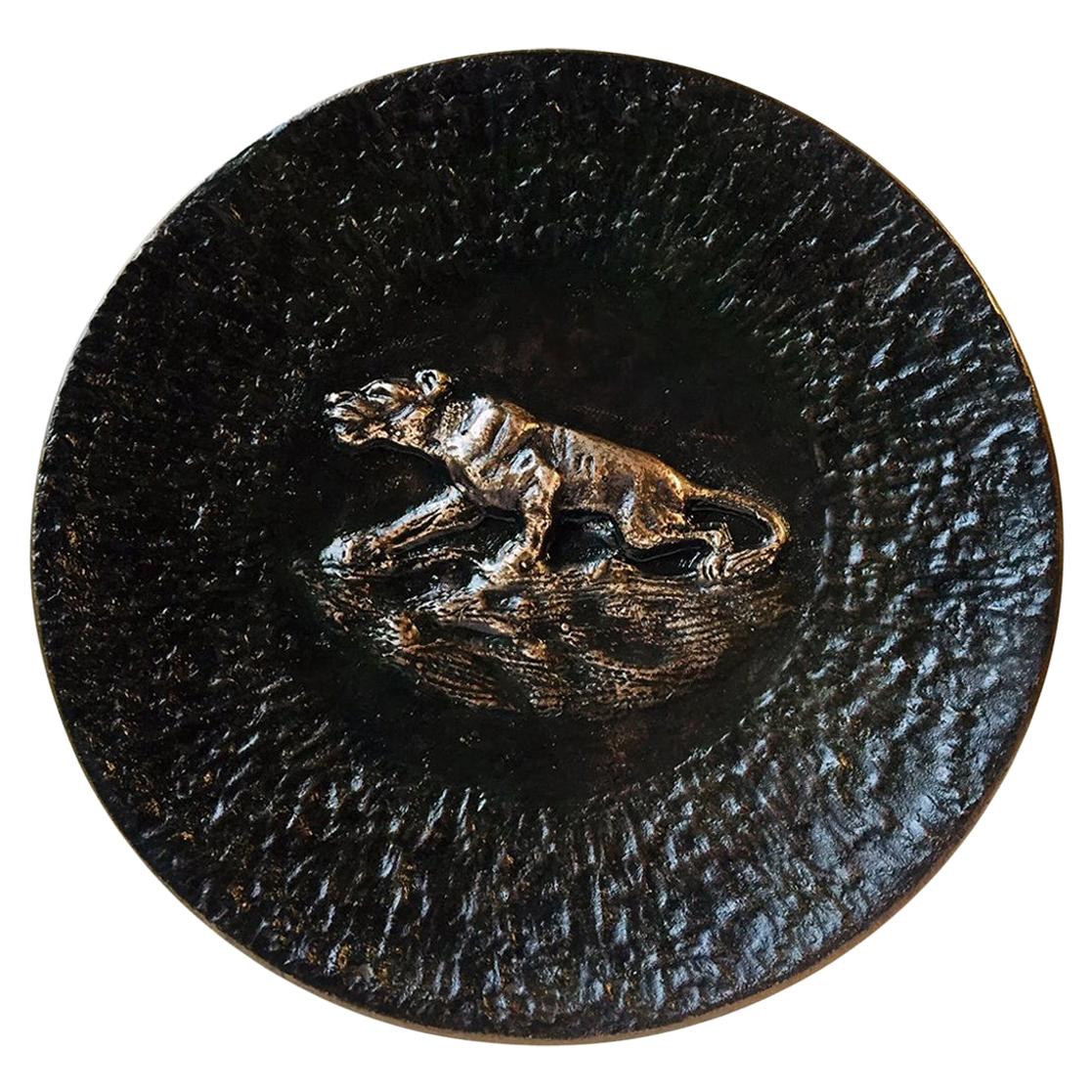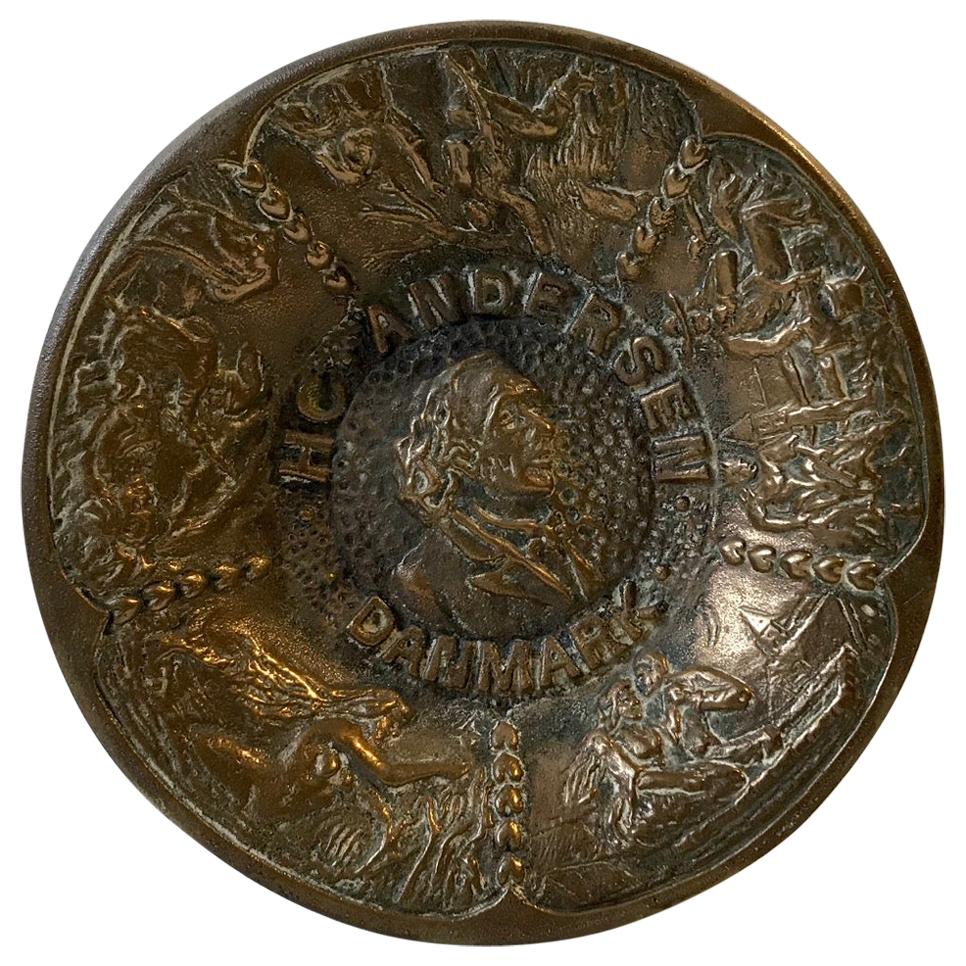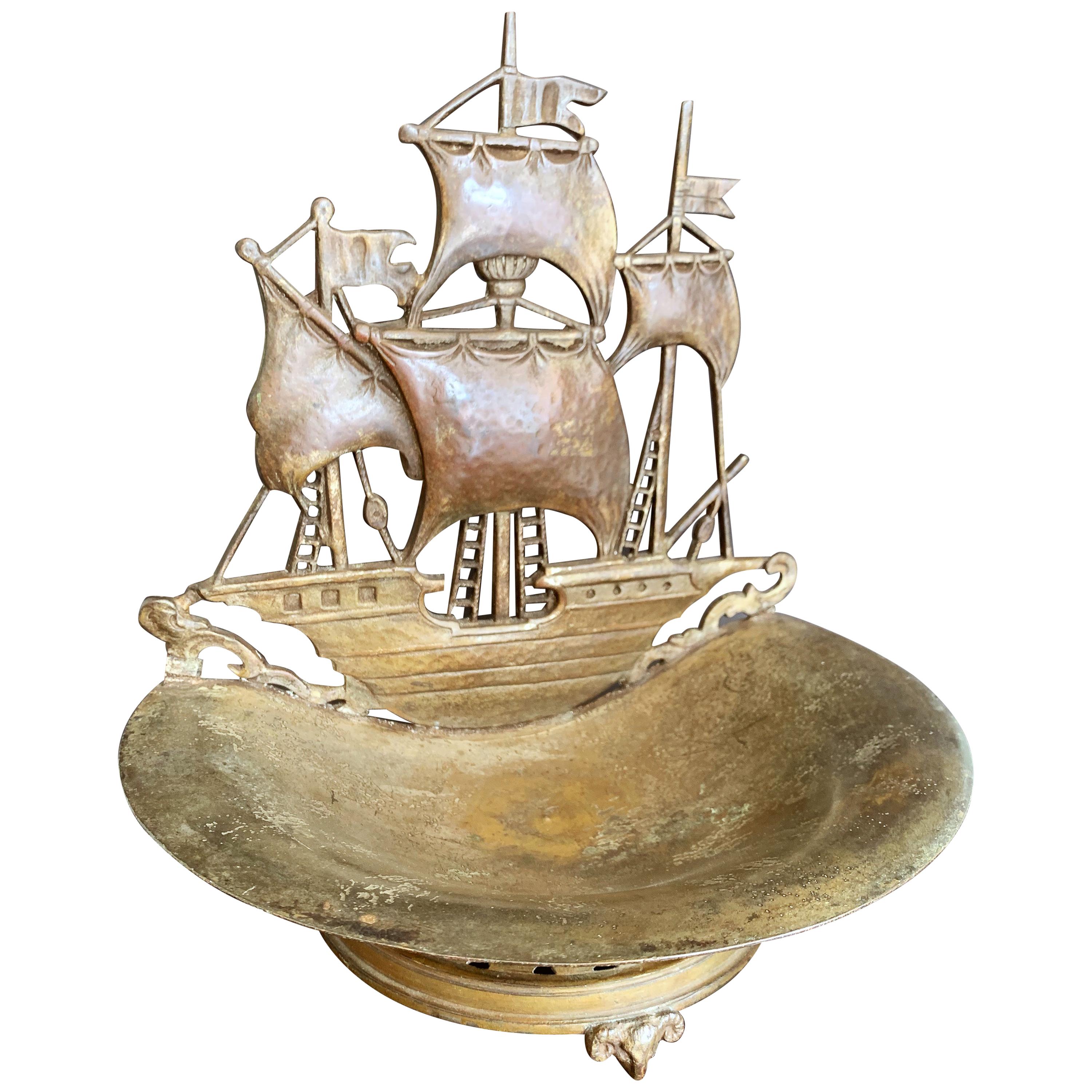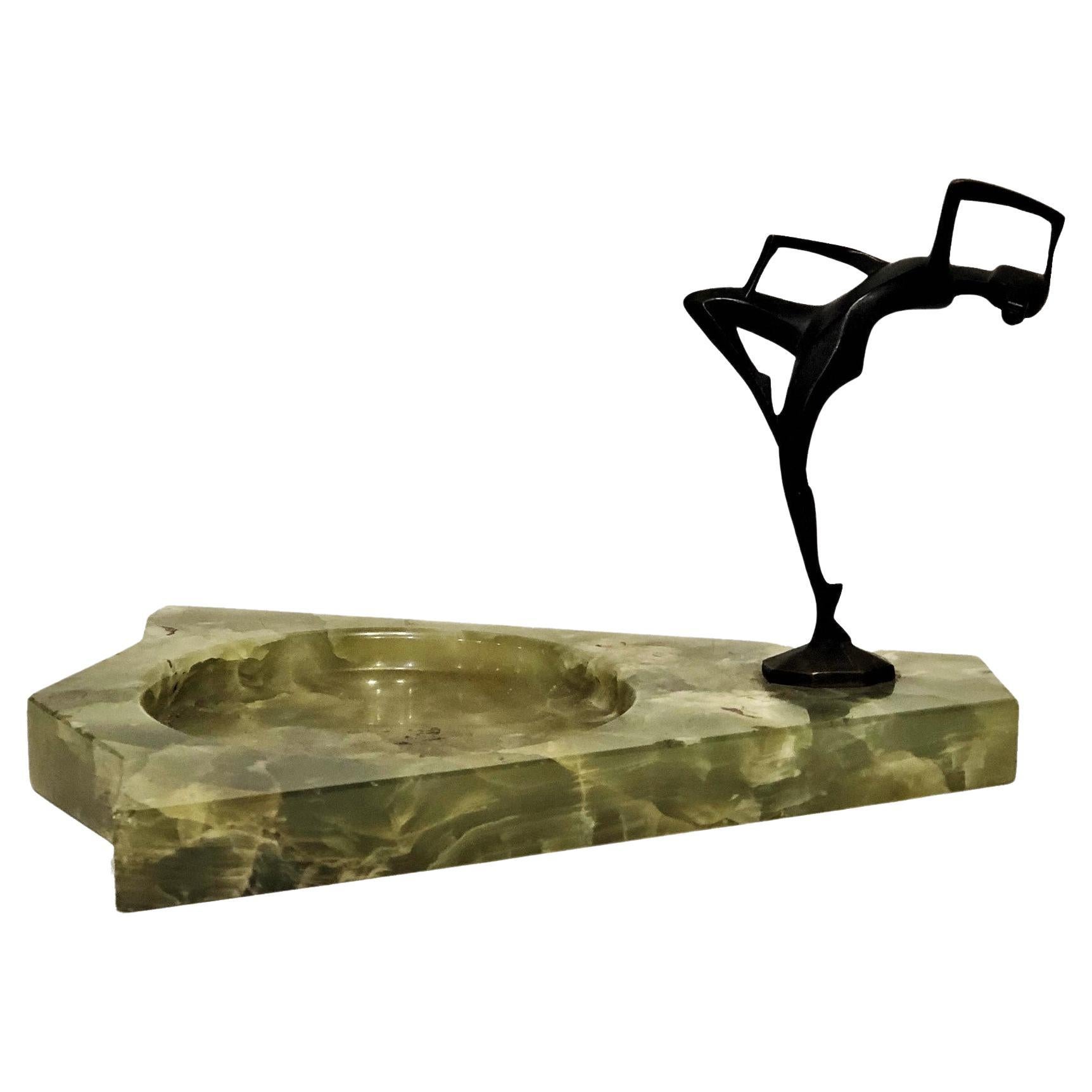Items Similar to Patinated Bronze Centrepiece with Pumas, Munich Secession, 1920s
Want more images or videos?
Request additional images or videos from the seller
1 of 9
Patinated Bronze Centrepiece with Pumas, Munich Secession, 1920s
About the Item
The Munich Secession was an association of visual artists who broke away from the mainstream Munich Artists' Association in 1892, to promote and defend their art in the face of what they considered official paternalism and its conservative policies. They acted as a form of cooperative, using their influence to assure their economic survival and obtain commissions. In 1901, the association split again when some dissatisfied members formed the group Phalanx. Another split occurred in 1913, with the founding of the "New Munich Secession".
By the end of the 19th century, more artists lived in Munich than lived in Vienna and Berlin put together. However, the art community there was dominated by the conservative attitudes of the Munich Artists' Association and its supporters in the government. These attitudes found expression in the official "mission statements", written by the so-called "Prince of Painters" (Malerfürst) Franz von Lenbach. Matters came to a head in 1891 when the Prince-Regent Luitpold of Bavaria founded the Prinzregent-Luitpold-Stiftung zur Förderung der Kunst, des Kunstgewerbes und des Handwerks in München, an art foundation devoted to promoting traditional history painting in the service of the state. This foundation created and maintained a high level of artistic quality and brought world attention to the Academy of Fine Arts, but was firmly opposed to impressionism, expressionism, symbolism and other contemporary trends in the art world.
At first, the Secession had some difficulty finding a building for their exhibitions. The city of Frankfurt offered to provide the necessary space and 500,000 Gold Marks, if the group would move there permanently. Their first exhibition actually took place at Berlin's "National Exhibition Building" (now known as "ULAP") early in 1893.
Baurat (city construction supervisor) Franz von Brandl provided the Secession with some free land at the corner of Prinzregentenstraße and Pilotystraße. Construction began immediately and their debut exhibition took place on July 16, 1893, in the first portion of the building to be completed. Over 4,000 visitors came to see 876 works by 297 artists.
The success of this effort eventually allowed them to come to an agreement with Franz von Lenbach and the Artists' Association. As a result, the art exhibition building on the Königsplatz (now the Staatliche Antikensammlungen) was transferred to the Secession in 1897.
In 1933, the National Socialist party began their crusade to bring all forms of artistic expression under their control: a process known as Gleichschaltung (bringing into line). Artists were eventually required to obtain state endorsement for all of their works. Those who were considered "degenerate" were not allowed to paint.[4] In 1938, the Munich Secession was dissolved as part of the "Kulturellen Säuberung" (cultural cleansing) process.
Following the end of World War II in 1946, the Neue Gruppe (de) and the Neue Münchner Künstlergenossenschaft (New Munich Artists' Association) were founded and led to the establishment of the Bundesverband Bildender Künstlerinnen und Künstler (Federal Association of Visual Artists).
In 1992, the Secession celebrated its centennial and, in March of the following year, the Society of Friends and Sponsors of the Munich Secession was created to support the Secession's continuing goals, maintain the "Secessionsgalerie" and promote exhibitions.
- Dimensions:Height: 6.5 in (16.51 cm)Width: 16.5 in (41.91 cm)Depth: 16.5 in (41.91 cm)
- Style:Art Deco (Of the Period)
- Materials and Techniques:Bronze,Patinated
- Place of Origin:
- Period:
- Date of Manufacture:1920s
- Condition:Wear consistent with age and use. We make our best effort to provide a fair and descriptive condition report. Please examine the photos attentively. Send us a message to request more details or discuss price.
- Seller Location:New York, NY
- Reference Number:1stDibs: LU2819311103911
About the Seller
5.0
Vetted Seller
These experienced sellers undergo a comprehensive evaluation by our team of in-house experts.
Established in 1993
1stDibs seller since 2017
68 sales on 1stDibs
Typical response time: 2 hours
- ShippingRetrieving quote...Ships From: New York, NY
- Return PolicyA return for this item may be initiated within 10 days of delivery.
More From This SellerView All
- Art Deco Vienna Bronze and Green Onyx Vide-Poche, ca. 1920sLocated in New York, NYABOUT A vide poche—French for empty pockets—is a valet tray or empty bowl used to collect change, keys, and daily miscellany. This unique object is created during the Art Deco era (c...Category
Vintage 1920s Austrian Art Deco Decorative Dishes and Vide-Poche
MaterialsAgate, Bronze
- Austrian Art Deco Bronze and Green Agate Vide-Poche, ca. 1920sLocated in New York, NYAustrian Art Deco Vide-Poche Bronze and Green Agate ca. 1920s ABOUT Vide Poche (meaning 'empty pocket' in French) is intended to be a trinket tray used for holding the contents of ...Category
Vintage 1920s Austrian Art Deco Decorative Dishes and Vide-Poche
MaterialsAgate, Bronze
- Italian Art Deco, Equestrian Groom, Patinated Bronze Sculpture, 1920sLocated in New York, NYSigned on the base: “DITA”. Impressed foundry stamp.Category
Vintage 1920s Italian Art Deco Figurative Sculptures
MaterialsBronze
- Joseph Franz Pallenberg, Bear, German Patinated Bronze Sculpture, ca. 1920sBy Joseph Franz PallenbergLocated in New York, NYSigned “Jos. Pallenberg”. Dark-brown patina, original black marble base. Dimensions Height: 8 inches (20cm) Width: 7.5 inches (18.75cm) Depth: 8.5 inches (21.25cm) Joseph F...Category
Vintage 1920s German Art Deco Animal Sculptures
MaterialsBronze
- Austrian Art Deco, Dancer, Patinated Bronze, Onyx and Marble Lamp, circa 1920sLocated in New York, NYA beautiful and very unusual Austrian Art Deco nightstand lamp with a semi-nude exotic dancer in a luxury headdress. The lamp base is made of combination of black marble and onyx, wi...Category
Vintage 1920s Austrian Art Deco Table Lamps
MaterialsMarble, Onyx, Bronze
- Ignacio Gallo, Dancing with Satyr, Spanish Art Deco Silvered Bronze, circa 1920sBy Ignacio GalloLocated in New York, NYIgnacio Gallo (Spanish/French, 1850-1935) was a Spanish sculptor, who was active as a sculptor and engraver in Madrid and Paris in the interwar period. His works show animal scenes, ...Category
Vintage 1920s Spanish Art Deco Figurative Sculptures
MaterialsBronze
You May Also Like
- Art Deco Bronze Bowl with Tiger Motif in Relief, 1920sLocated in Esbjerg, DKDecorative dish or bowl with a textured surface, green Verdigris patina and a raised tiger motif partially exposed. It was manufactured in Scandinavia during the early 20th century b...Category
Vintage 1920s Scandinavian Art Deco Decorative Bowls
MaterialsBronze
- Hans Christian Andersen Bronze Dish with Fairy Tales, 1920sLocated in Esbjerg, DKVery detailed cast bronze dish depicting Hans Christian Andersen and some of his fairy tales. It was made in 1925. 50 years after his death in 1875. M...Category
Vintage 1920s Danish Art Deco Decorative Dishes and Vide-Poche
MaterialsBronze
- "Spanish Galleon, " Romantic 1920s Bronze Sculptural Bowl with Ram's Head FeetBy Oscar Bruno BachLocated in Philadelphia, PAA rare and impressive illustration of the fascination with sailing ships, Mediterranean Revival architecture, and Spanish decorative arts in th...Category
Vintage 1920s American Art Deco Decorative Bowls
MaterialsBronze
- A Just Andersen bronze bowl, 1920s, DenmarkBy Just AndersenLocated in Værløse, DKA classic bronze bowl designed by Just Andersen in the 1930s. * A full-bronze bowl * Designer: Just Andersen * Model: B161 * Year: 1926-1929 * Condition: Very good vintage conditi...Category
Vintage 1920s Danish Decorative Bowls
MaterialsBronze
- Ventrella Bronze Centrepiece, Italy 1970sBy VentrellaLocated in Naples, ITLarge round brass and bronze centrepiece series 'Labirinti', signed Ventrella GioiellIeri in Naples.Category
Vintage 1970s Italian Mid-Century Modern Decorative Dishes and Vide-Poche
MaterialsBronze
- Scandinavian Patinated Bronze Charger with Lucifer, Satan, 1930sLocated in Esbjerg, DKUnusual Cast bronze dish with green verdigris patina. It features scenes from the old testement with depictions of Lucifer - Satan cast in relief arou...Category
Vintage 1930s Scandinavian Art Deco Decorative Dishes and Vide-Poche
MaterialsBronze





